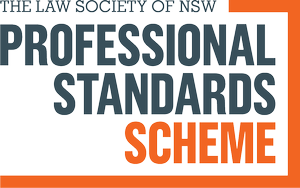What Is A Bridging Visa D (BVD)?
Bridging visa D (BVD) Subclass 040/041 is designed for individuals who have no other visa options to remain lawfully in Australia. It is granted to individuals who cannot make a substantive visa application or those who are waiting for the outcome of a visa application that is being reviewed. BVD holders are not permitted to work in Australia, and they must leave the country when their visa expires or when granted a Bridging visa E (BVE).
It is important to note that BVD is not an option for those who are currently unlawful in Australia. Seeking the advice of a qualified migration agent or immigration lawyer is crucial to understanding the requirements and limitations of the BVD.
There are two types of BVDs available:
- ● Bridging (Prospective Applicant) visa (subclass 040)
- ● Bridging (Non-applicant) visa (subclass 041)
The BVD allows you to stay in Australia lawfully for a limited time. It does not allow you to work or re-enter Australia if you leave. If you work, your BVD will be subject to cancellation.
When To Apply A Bridging Visa D?
In some cases, when you make an invalid application for a substantive visa in Australia, you will also have made applied for a BVD. The Department will notify you if this is the case and you will not need to lodge a separate application.
Who Can Get A Bridging Visa D?
You can only be granted a BVD (subclass 040) if all of the following apply to you:
- ● you are in Australia
- ● you do not hold a visa or you hold a visa that will end in the next three working days after the day you applied for the BVD
- ● you tried but were unable to apply for a substantive visa – for example, you did not pay the correct charge or you filled out the wrong visa application form – but you will be able to do so within the next five working days (you might then be eligible for a Bridging visa C (BVC).
You can only be granted a BVD (subclass 041) if all of the following apply to you:
- ● you are in Australia
- ● you do not hold a visa
- ● you are either unable or do not want to apply for a substantive visa
- ● an authorised officer is not available to interview you.
What Conditions Do Bridging Visa D Contain?
The BVD (subclass 040) is subject to 8101 condition which states that the holder must not engage in work in Australia. Work is taken to mean any activity that, in Australia, normally attracts remuneration.
The BVD (subclass 041) is subject to both 8101 condition and 8401 condition. The 8401 condition states that the holder must report:
- (a) At a time or times; and
- (b) At a place;
specified by the Minister for the purpose.
When Will Bridging Visa D (BVD) Expire?
The BVD (subclass 040) comes into effect either on grant, or when the substantive visa held by the holder ceases; and will remain in effect for 5 working days after date of grant.
The BVD (subclass 041) comes into effect upon grant and remains in effect until:
- (a) The end of the fifth working day after the date of grant; or
- (b) If the applicant is granted a Subclass 050 (Bridging General) visa before the end of that day – the date of grant of the Subclass 050 (Bridging General) visa.
How Can We Help You?
If you are experiencing difficulties with your visa in Australia, you can contact our team by calling or emailing us.


